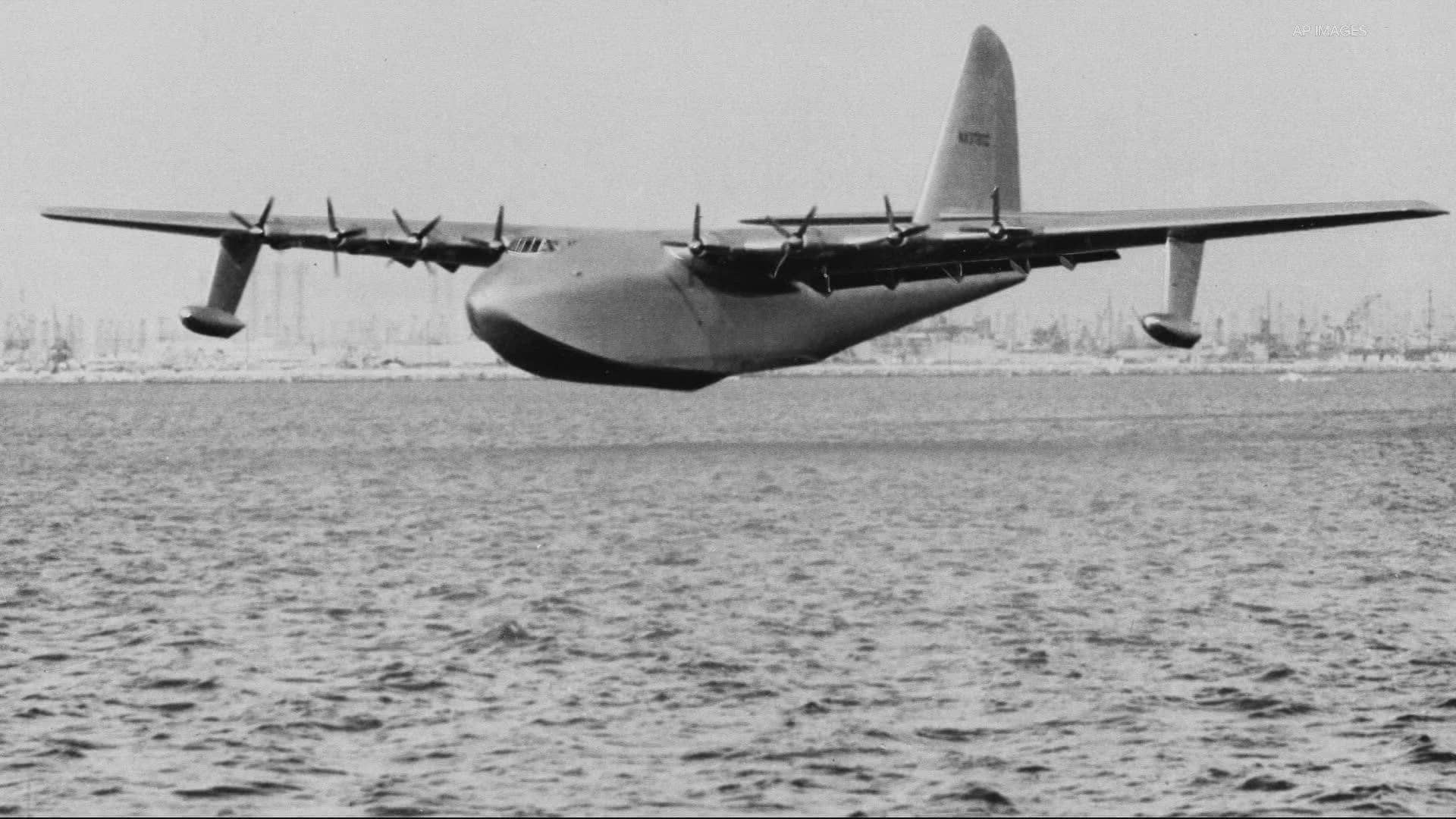
The Hughes H-4 Hercules (registration NX37602) is a prototype airlift flying boat designed and built by the Hughes Aircraft Company in the 1940s. It was built from wood, almost entirely of birch, because of wartime restrictions on the use of aluminum and concerns about weight; the aircraft was nicknamed the “Spruce Goose.” It is the largest flying boat ever built and it had largest wingspan of any aircraft that had ever flown (until the Scaled Composites Stratolaunch first flew on April 13, 2019). The Spruce Goose was intended as a transatlantic flight transport for use during World War II; however, it was not completed in time to be used in the war. The aircraft made only one brief flight, on November 2, 1947, in Long Beach, California, and the project never advanced beyond the single example produced. It remains in good condition, and it is now on display at the Evergreen Aviation & Space Museum in McMinnville, Oregon. This article from Popular Mechanics was transcribed by yours truly in Anniversary Gregg.
Attachment: 200-tons-and-it-flies.pdf
Interesting article. Phrases such as larger-than & bigger-than were useful, as I have not used them. But several words I could not get:
(1) p1c2 l2, second outline (after “a”)
(2) p1c2 l6, last outline
(3) the several uses of the “dot p” after quantities (p2c1 l10 etc)
(4) p2c2 l3, the name before “XC-99”
(5) p3c1 l20, “weaknesses and ??.”
(6) p4c2 l1, the last outline
(When flying the plane I hope its steering was less meandering than the dotted line you drew at the end!)
Here you go:
(1) p1c2 l2, second outline (after “a”): “few years ago” (it can also mean “few hours ago”).
(2) p1c2 l6, last outline: “Gargantua”
(3) the several uses of the “dot p” after quantities (p2c1 l10 etc): “horsepower” (h.p.)
(4) p2c2 l3, the name before “XC-99”: “Consolidated’s”
(5) p3c1 l20, “weaknesses and ??.”: “semi-rot”
(6) p4c2 l1, the last outline: “slated”
By the way, this article had everything in it: word endings and beginnings, abbreviating principle, phrases, units, etc. It could have easily been used as a final test in a transcription class.
And yes, the plane was less meandering than the drawing! You can watch video of the flight here. I think it’s remarkable that it flew with those propeller engines — if it would have had more powerful jet engines, it would have really flown much higher.
Thanks Carlos.
I got “slated” but it made no sense to me — it must be in more common use in the states.
I might have got Gargantua had there been an n in it. Is “ua” often represented by w-a ?
I saw the ‘flight’. Must have been a disappointment to Mr Hughes.
You’re welcome. In this case, “slated” means to give a purpose for a period of time.
There is an n in “Gargantua” — it’s in the nd blend after the second a circle, but I made it more obvious now. The combination “ua” is represented by the underlined circle.
I don’t think Mr. Hughes was disappointed because this plane was a proof of concept and it flew. Several other flights were scheduled at the time after this one, but they never happened. Moreover, he continued maintaining the plane until it was sold. That’s one of the reasons it is still in good condition.